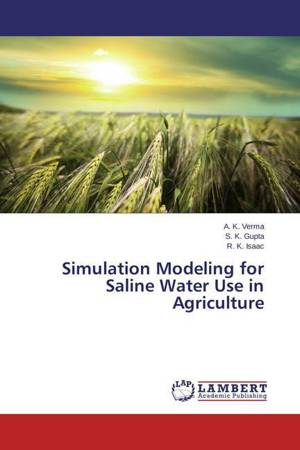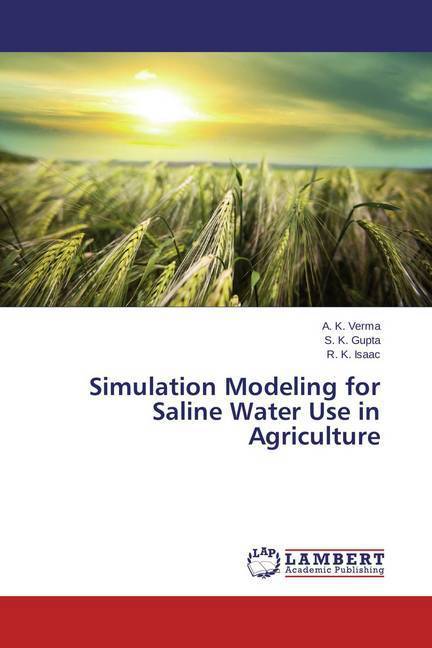
- Afhalen na 1 uur in een winkel met voorraad
- Gratis thuislevering in België vanaf € 30
- Ruim aanbod met 7 miljoen producten
- Afhalen na 1 uur in een winkel met voorraad
- Gratis thuislevering in België vanaf € 30
- Ruim aanbod met 7 miljoen producten
Zoeken
Simulation Modeling for Saline Water Use in Agriculture
A. K. Verma, S. K. Gupta, R. K. Isaac
Paperback | Engels
€ 79,45
+ 158 punten
Omschrijving
Saline water adversely affects crop production due to mismanagement of its use for irrigation. The yield of crops irrigated with saline water can be enhanced substantially, if an additional source of good quality water is available for use at critical times during the season. An alternative approach is to use the good quality water in blending mode. In the present book, Salt-Water-Atmosphere-Plant (SWAP) model used for its evaluation and scenario building capability in monsoon climatic conditions having the problems of saline groundwater. The contents of this book include: introduction that highlight use of saline water with different modes of irrigation, review of global and Indian use of saline water under the heads: Direct or blended use of saline water and its effects on soil salinity and crop yield, cyclic mode use of fresh and saline water, use of saline water in aquaculture, use of models for water management, and use of SWAP model for water management. Authors believe that the information contained in this book would facilitate the readers to have a fair view of proper use of saline water and add to the knowledge of conjunctive use of water with the help of SWAP model.
Specificaties
Betrokkenen
- Auteur(s):
- Uitgeverij:
Inhoud
- Aantal bladzijden:
- 236
- Taal:
- Engels
Eigenschappen
- Productcode (EAN):
- 9783659666087
- Verschijningsdatum:
- 12/01/2015
- Uitvoering:
- Paperback
- Afmetingen:
- 150 mm x 220 mm
- Gewicht:
- 349 g

Alleen bij Standaard Boekhandel
+ 158 punten op je klantenkaart van Standaard Boekhandel
Beoordelingen
We publiceren alleen reviews die voldoen aan de voorwaarden voor reviews. Bekijk onze voorwaarden voor reviews.








